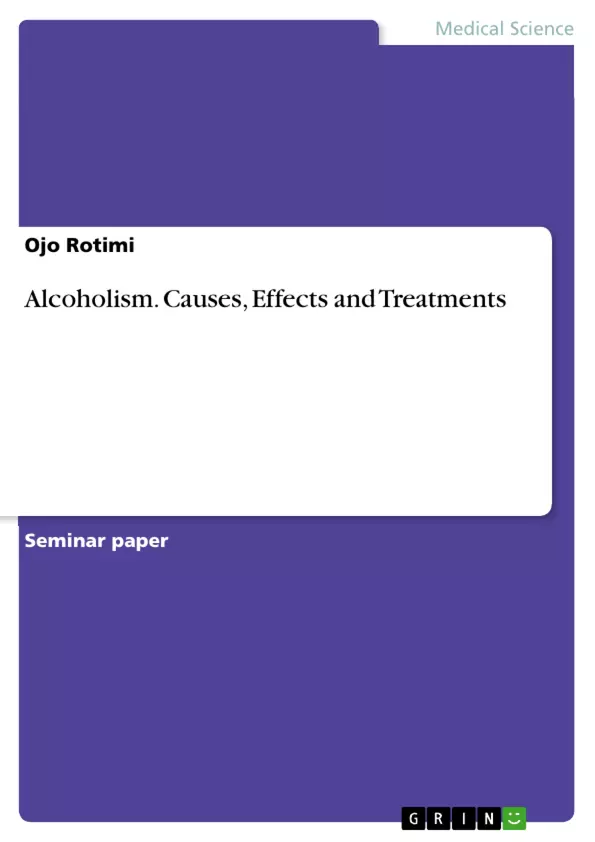This paper deals with the causes, effects and possible treatments of alcoholism. Alcoholism is called a "dual disease" since it includes both mental and physical components. The biological mechanisms that cause alcoholism are not well understood. Social environment, stress, mental health, family history, age, ethnic group, and gender all influence the risk for the condition. Alcohol damages almost every organ in the body, including the brain. The cumulative toxic effects of chronic alcohol abuse can cause both medical and psychiatric problems.
Inhaltsverzeichnis (Table of Contents)
- INTRODUCTION
- History
- Definition
- Alcohol
- EFFECTS OF ALCOHOL...
- CONTROL MEASURES
- CONCLUSION..
- RECOMMENDATIONS.
- REFERENCES
Zielsetzung und Themenschwerpunkte (Objectives and Key Themes)
This seminar explores the history, definition, and effects of alcohol consumption. The text aims to provide an understanding of the social and health impacts of alcohol abuse, examining its historical development, current definitions, and the various detrimental effects it poses on individuals and society.
- Historical overview of alcohol consumption and its recognition as a social and health issue.
- Definition and classification of alcoholism, emphasizing its medical recognition as a neurological disorder.
- The detrimental effects of alcohol abuse on both individuals and society, including health problems, social costs, and economic implications.
- The legal and cultural context surrounding alcohol consumption, including variations in age restrictions and societal acceptance.
- The psychological and physiological impacts of alcohol, including its effects on behavior, cognition, and physical health.
Zusammenfassung der Kapitel (Chapter Summaries)
- INTRODUCTION: This chapter provides a historical overview of alcohol consumption, tracing its usage and misuse throughout history. It defines alcoholism, discusses its medical classification, and explores the social stigma associated with the condition.
- EFFECTS OF ALCOHOL...: This chapter delves into the detrimental effects of alcohol consumption, highlighting its impact on individual health, social relationships, and economic productivity. The chapter examines the social and economic costs of alcohol abuse, as well as the various health problems associated with chronic alcohol consumption.
- CONTROL MEASURES: This chapter discusses measures implemented to control and mitigate the negative effects of alcohol abuse. It explores legal regulations, social initiatives, and public health strategies aimed at reducing alcohol-related harm.
Schlüsselwörter (Keywords)
The primary keywords and focus topics of this seminar include alcohol consumption, alcoholism, health effects, social impact, legal regulations, cultural context, and public health. The text explores the history of alcohol use, its definition and classification as a neurological disorder, its impact on individuals and society, and the various control measures implemented to address its negative consequences.
- Quote paper
- Ojo Rotimi (Author), 2012, Alcoholism. Causes, Effects and Treatments, Munich, GRIN Verlag, https://www.grin.com/document/515238



